Orthophotography
An orthophoto is a photograph showing images of objects in their orthographic positions. Orthophotos are geometrically the same as a planimetric map which also shows true orthographic positions of objects. The difference between the two is that the orthophoto is composed of actual images and the planimetric map consist of lines. Since they are planimetrically correct, orthophotos can be used as maps for making direct measurements, angles, and coordinated positions without making corrections for image displacement. This cannot be done with a regular photographic enlargement, which is a perspective projection, if there is any relief.
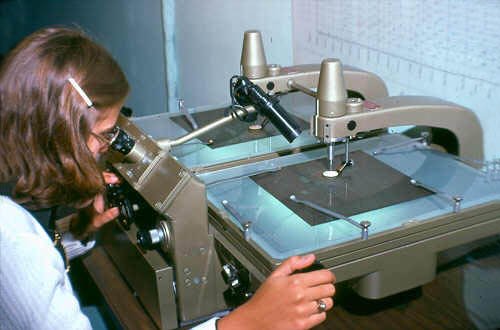
Wild point transfer device
Photo by W. Mayo
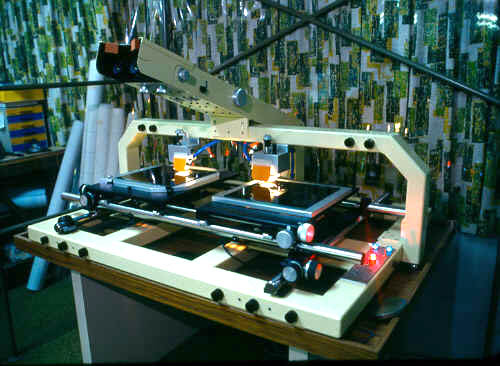
Kern point transfer device
Photo by W. Mayo
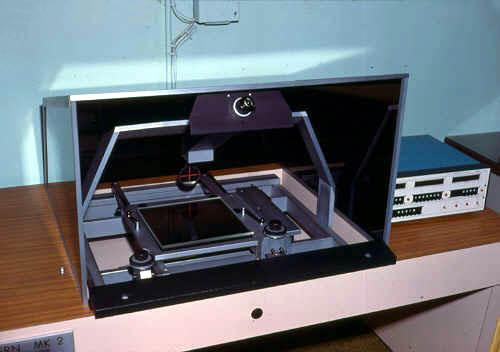
Kern Monocomparator
Photo by W. Mayo
Orthophotomaps are produced through a process called differential rectification, which eliminates image displacement. They are produced on machines called orthophotoscopes, or on specially modified stereoplotters.
Orthophotomaps are produced by grouping several orthophotographs together to form an absolute orientation in X and Y. Contours and spot elevations can be superimposed on a orthophoto, producing a topographic orthophotomap.
Basically, instruments produce orthophotoscan profiles of the terrain of a stereomodel at uniformly spaced increments, thereby exposing the orthonegative in a series of narrow strips each having a width exactly equal to the spacing between adjacent profile scans.
So we have two methods of producing photo enlargements. No photo made on any type of enlarger can correct for changes in elevation of terrain, and will result in variations of scale as the ground relief changes.
The enlarger will always produce a perspective projection. The orthophoto is an orthographic projection which corrects for relief in terrain, and can be used as a map from which measurements can be taken.
Zeiss makes a high precision photogrammetric scanner designated the SCIA Precision Scanner. With it's outstanding seven micron resolution and dimensional stability it can produce high resolution digital imagery and precise orthophotos.
AERIAL CAMERAS
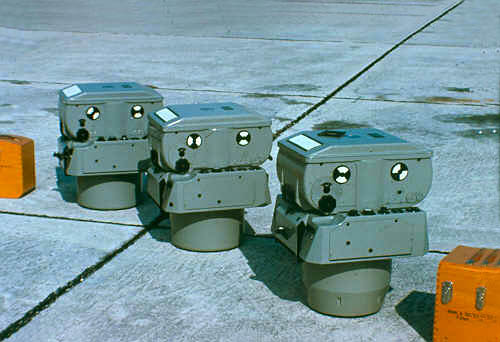
Two Zeiss RMKA/15/23 and a RMKA/30/23 Precision Cameras owned by Bosworth Aerial Surveys
Photo by W. Mayo
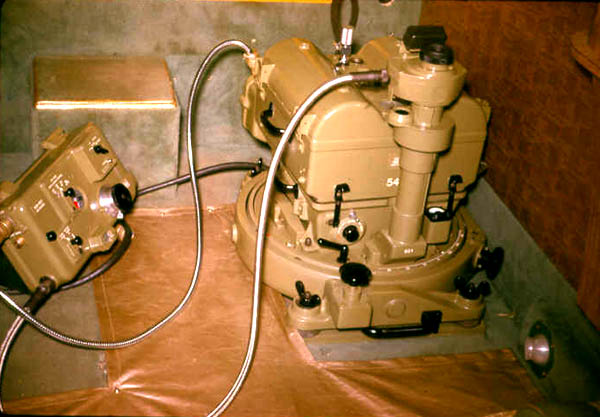
Wild RC-8 Aerial camera installed in twin Beach.
Photo by W. Mayo
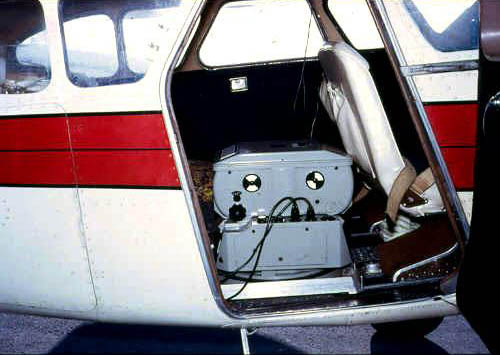
Zeiss RMKA/15/23 in Cessna 195
Photo by W. Mayo
The cameras used during the Korean War period were barely acceptable for their intended purpose. Basically they lacked resolving power, the ability to record minute detail. These cameras now of course are obsolete and have long since gone to the junk yard. These cameras were mostly K-17 type, K-22, K-18, K-19, and K-38. Through the years there were minor improvements in military cameras with the introduction of the KC-1 and KC-1B which had a planigon lens. Wild-Heerbrug introduced the RC-5, then the RC-8. Zeiss developed the RMK/15/23. These still were not "distortion free" cameras. Finally Zeiss introduced the RMKA/15/23, which for years was accepted by the mapping industry as the most precision camera available, and many are presently being used satisfactorily. Wild-Heerbrug came out with the RC-10 but mapping companies generally preferred the Zeiss.
I had the pleasure to personally visit the Zeiss factory, the Wild factory, and the Kern factory in Europe with my boss Bill Bosworth. I was able to actually use the stereoplotters, rectifiers, and observe the complete manufacturing process of cameras and other equipment. We were impressed with the Wild E-4 rectification system and their A-10 analog stereoplotter. Mr. Bosworth purchased both systems, a very large investment. The A-10 plotter will be discussed later. When the analytical plotter was developed we compared the Zeiss to the Wild BC-2, and selected the BC-2 as better for our usage. These plotters also will be discussed in "Stereoplotters". As for the cameras we were already using the Zeiss RMKA/15/23. Mr. Bosworth also owned a rare RMKA/30/23 12 inch focal length, which was used with the E-4 system. The 12 inch camera reduced image displacement.
Now a new chapter has emerged on the camera scene. We now have a system so sophisticated it almost defies description. The new camera is a Zeiss RMK TOP 15 high precision aerial mapping system which utilizes a T-AS gyro-stabilized suspension mount and T-MC Forward Motion Compensation magazine. It is difficult to imagine but at the time of exposure the film actually moves in relationship to the moving image. This is image motion compensation. A menu driven computer control system controls the set up. The camera has less than three microns distortion. So since the old K-17 we have taken a giant step in sophistication with this remarkable camera.


